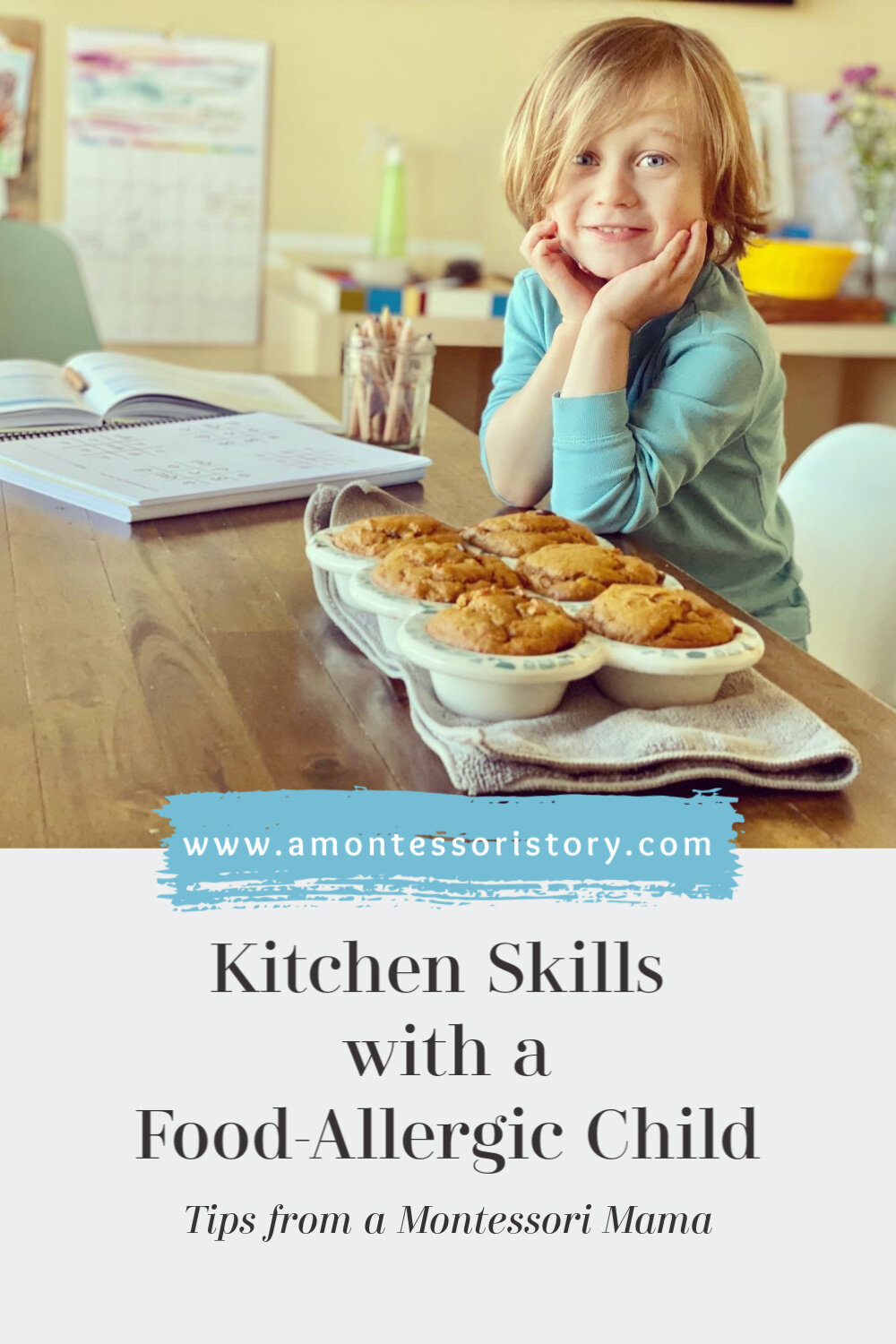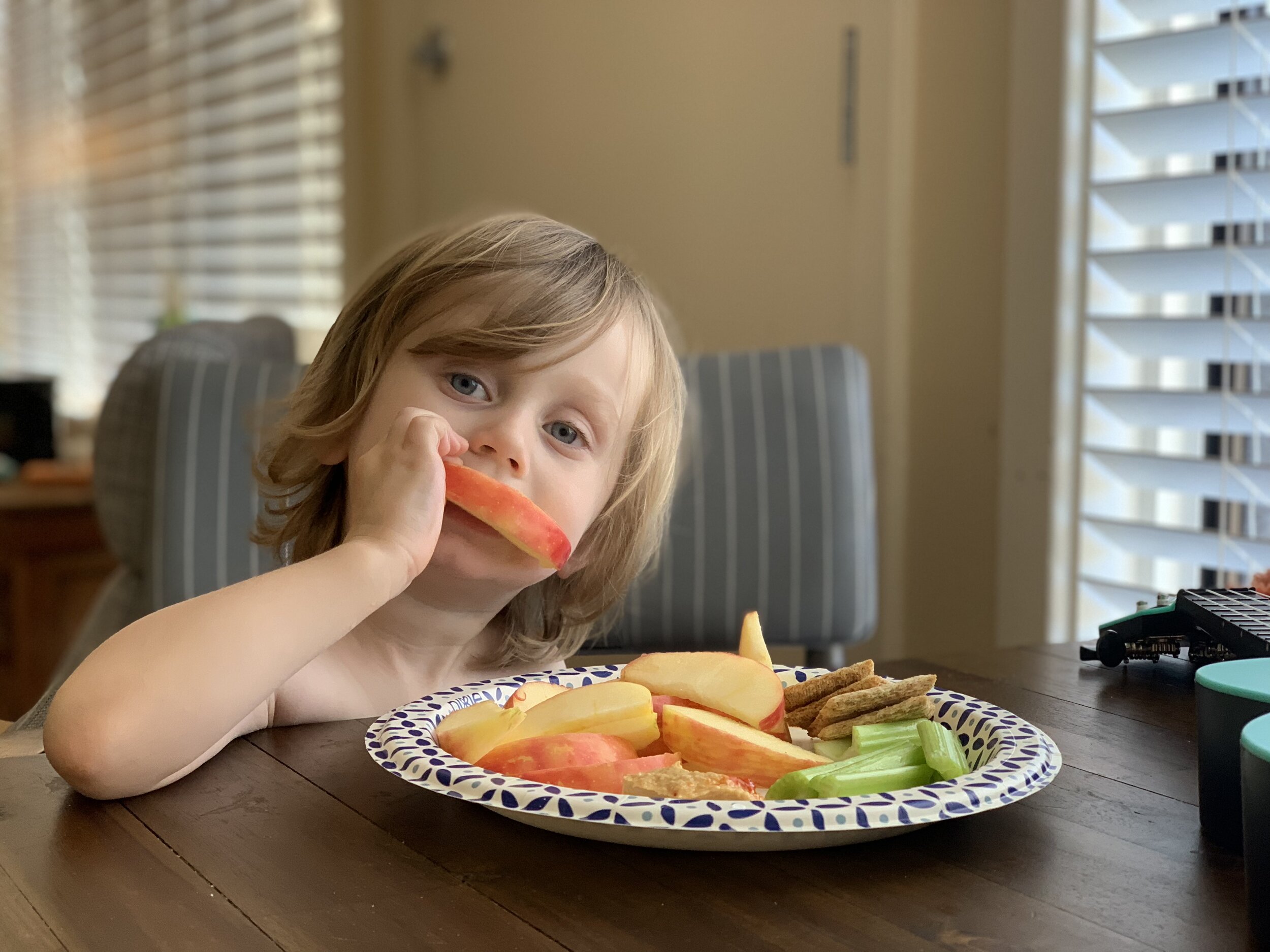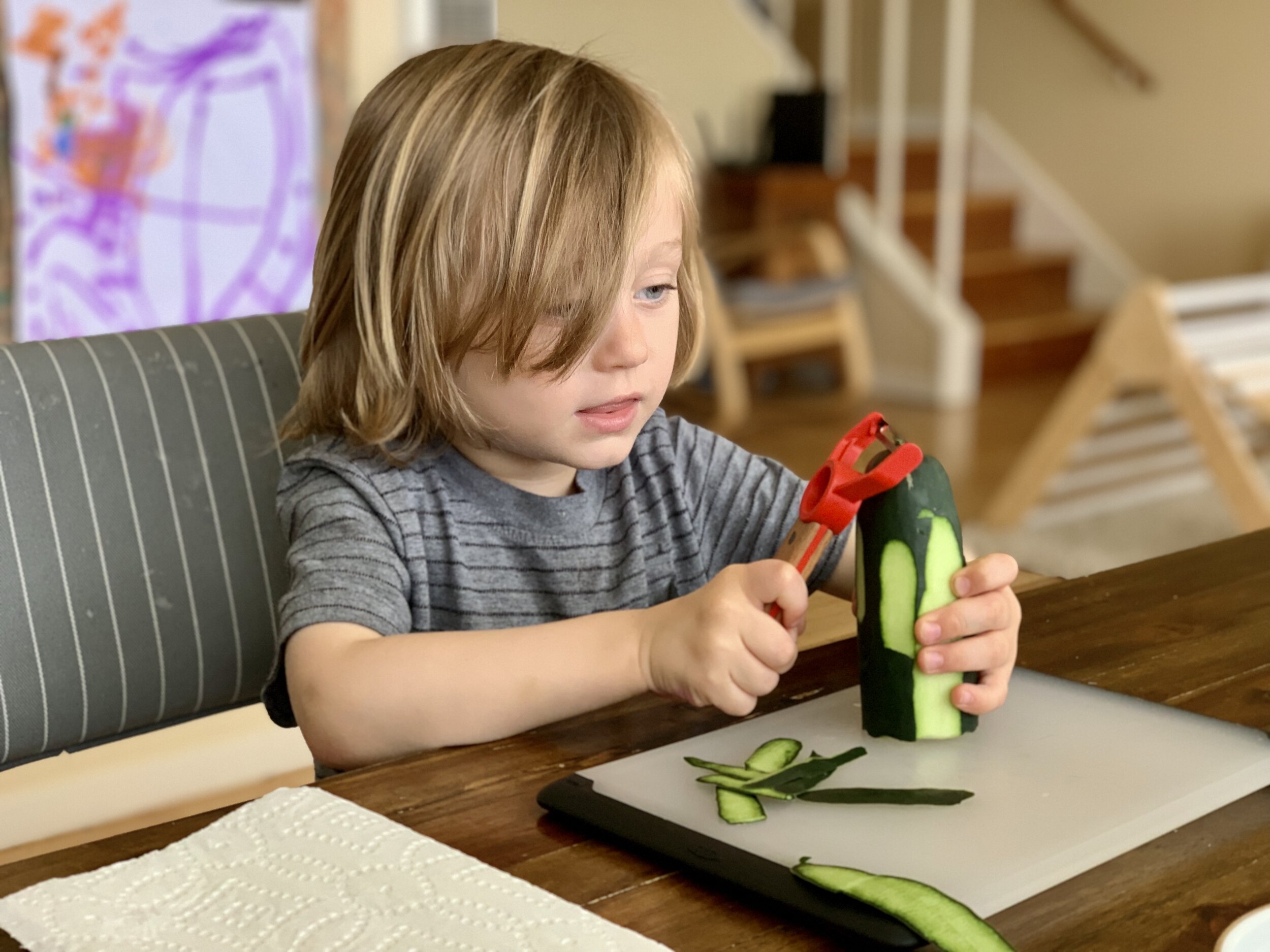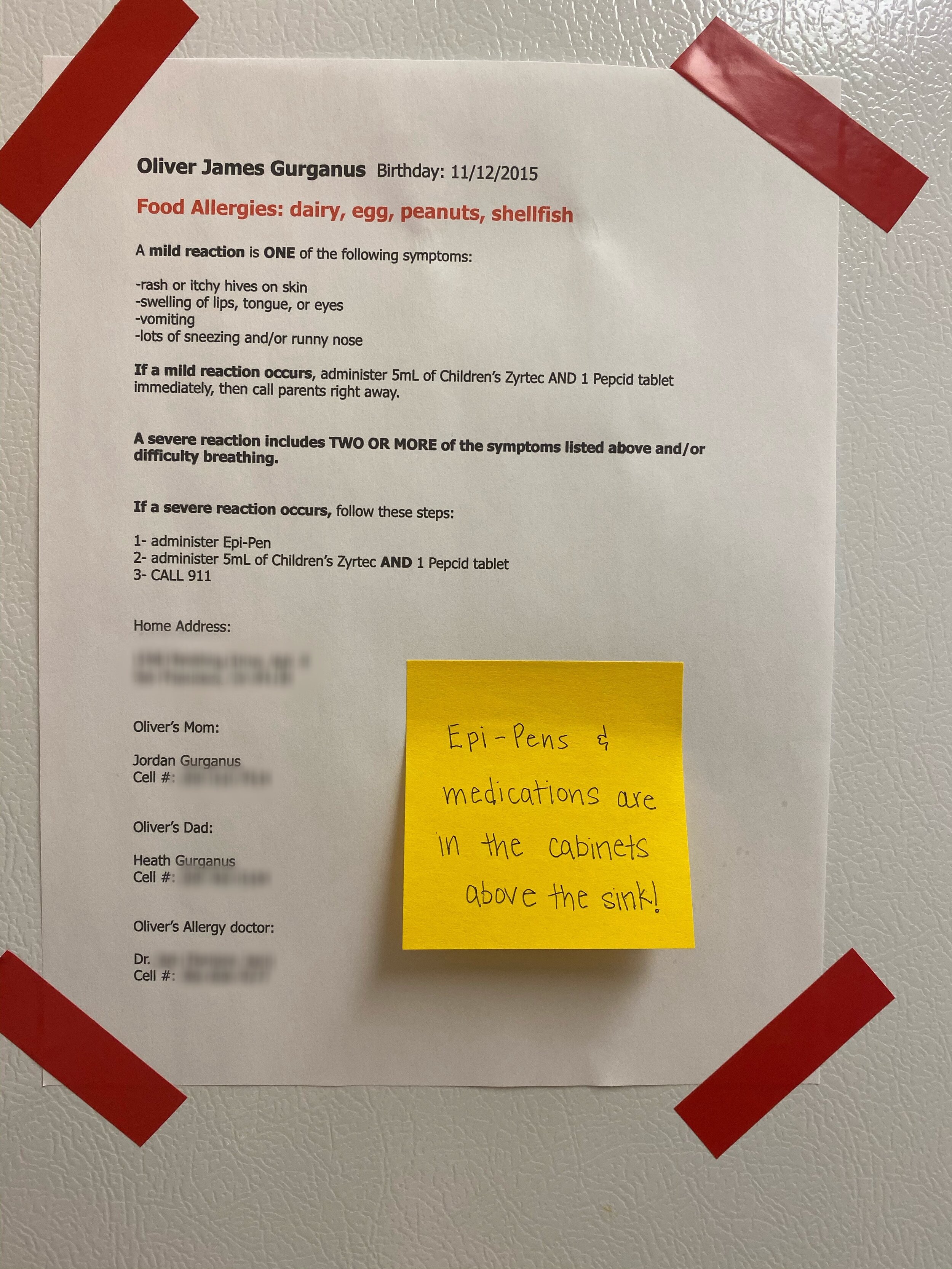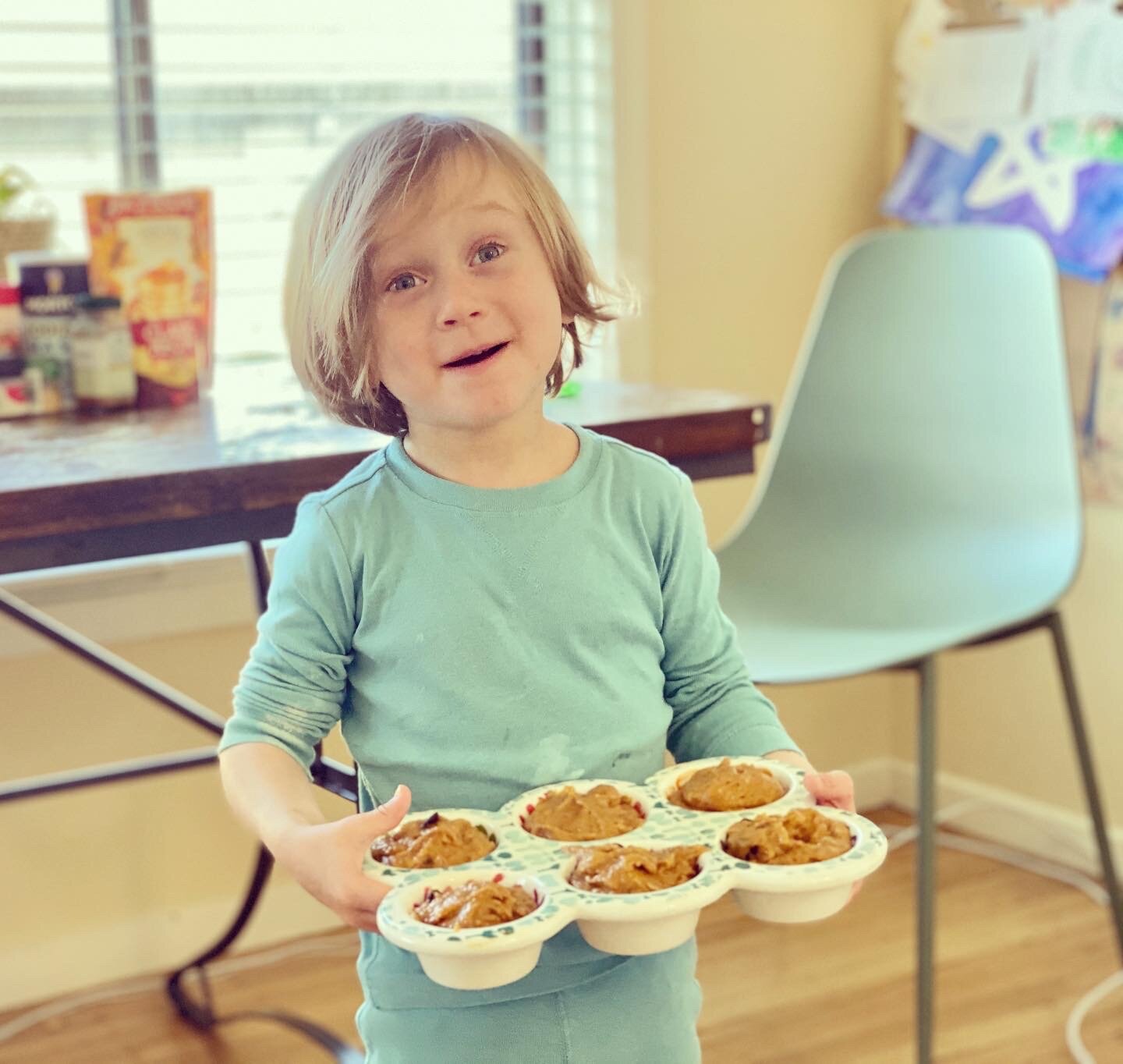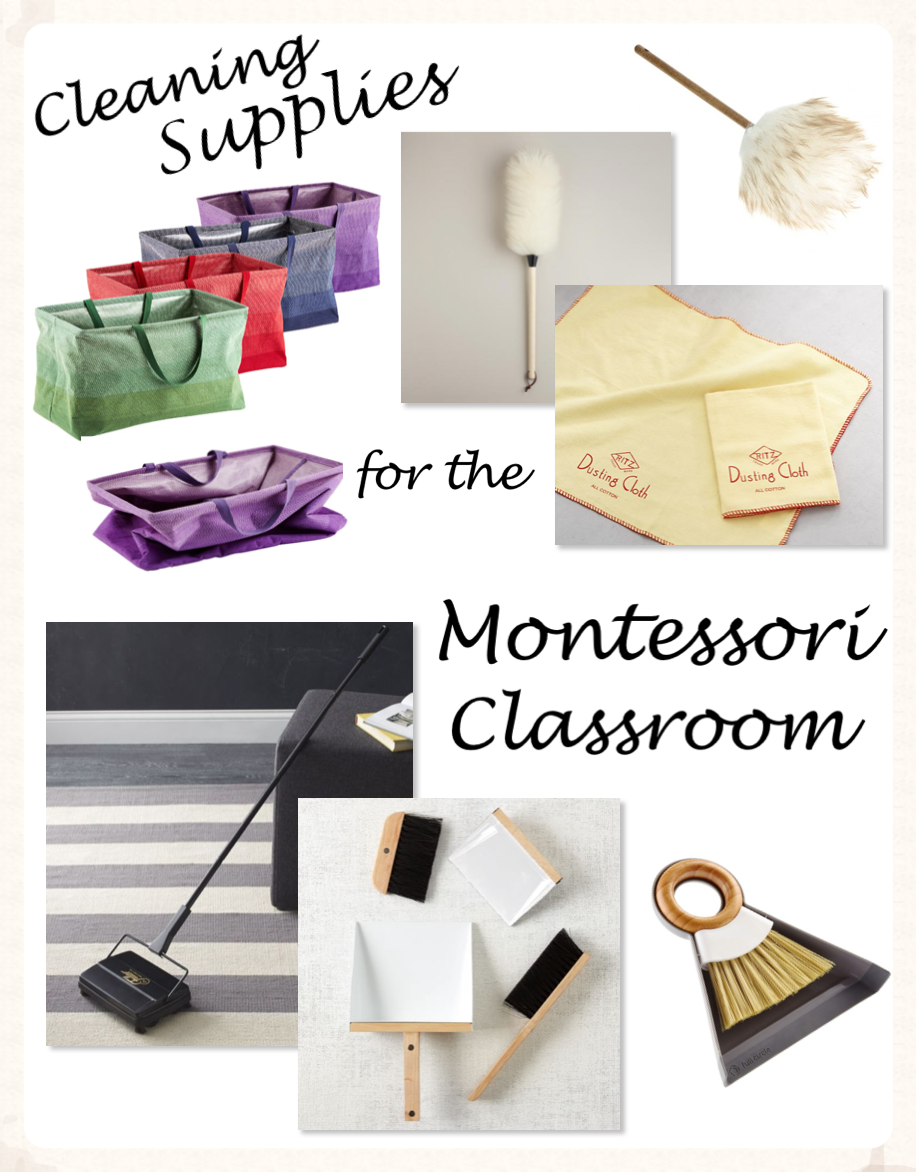Kitchen Skills with a Food-Allergic Child: Tips from a Montessori Mama
*This post may contain affiliate links at no cost you.
“Help me to do it myself.”
Guiding the child toward independence is the cornerstone of the Montessori philosophy. And as a Montessori teacher and mother, introducing my child to practical life skills is so important. I want to give Oliver opportunities each day to contribute to our family’s home-life in a meaningful way.
At age 3 (soon-to-be 4), he can help take out recycling, fold washcloths, and even dust-mop the floor. He puts his dishes away and sweeps his crumbs off the floor after his meals.
But what about all those kitchen skills that children need to learn? And what about those special childhood memories—baking cookies for Santa, making breakfast for Dad on Father’s day, making homemade ice cream on a hot summer’s day?
To be honest, I avoided this area of practical life for a long time. Not just because of the obvious dangers—the sharp objects, the hot oven, the boiling pot of water—but because Oliver has severe food allergies to dairy, egg, peanuts, and shellfish. Accidentally giving my child a food with traces of egg or peanut in it could cause anaphylaxis, a life-threatening allergic reaction.
Food allergies were actually a primary factor in our decision to homeschool this year. Oliver started oral immunotherapy (OIT) about a month ago. It will likely be a long process, and it’s a huge undertaking for our family. It’s a lot to unpack, so I’ll save that post for another day.
When we discovered Oliver’s food allergies, it meant a lifestyle change for our family. Dairy, egg, and peanuts have been staples in my daily diet since my childhood. Fast forward to today, and I haven’t bought a jar of peanut butter or a crate of eggs in over 3 years. Though we are not vegan (or even vegetarian), we eat lots of vegan foods just because we know they are safe. We rarely eat out at restaurants. We take our own treats to birthday parties. And we carry Epi-Pens, antihistamines, hydrocortisone cream, and an inhaler everywhere we go. Whether it’s to a museum, on a hike, or to the beach—these things are always with me. People may wonder why I still wear a backpack on the reg now that I’m in my 30’s. Well, now you know!
It often seems easiest just to avoid the kitchen all together. Less experimenting with new recipes means less stress and anxiety, right? I’ve seen so many adorable photos on social media of capable little ones scrambling eggs alongside their watchful parents—it’s is the stuff of this mama’s nightmares! Just the thought of doing that with my child gives me the heebie-jeebies.
But dealing with food allergies doesn’t just affect parents and caregivers; it also has a profound impact on the child.
My 3-year-old knows that some foods that most people love to eat are just not safe for him. He’s memorized his list of allergens. Before we have a playdate with other children, I remind him that if someone offers him food, he should always ask me first.
This summer after a day at the beach with friends, my little guy couldn’t wait to tell me what happened: “Those girls wanted to give me some chips, but I told them that my mommy doesn’t know if it’s safe.”
His face was beaming with pride, and of course I was proud of him, too! Our conversations had been successful! But oh, how those words made my heart sink all at the same time.
Oliver also knows to tell me right away if his throat hurts or feels funny, if he is having trouble breathing, or if his body feels itchy. This is a conversation we have daily, especially now that we’ve started OIT.
Food allergies are a huge burden for any child to bear.
And now that we’re homeschooling, I know that Oliver and I need to get into the kitchen more often, and we need to start learning together.
Imagine how empowering it can be for a child with food allergies to learn not only how to make safe and healthy food choices independently, but also how to prepare delicious, allergy-friendly treats and meals to share with others!
I, for sure, want that for Oliver, so we’re diving in head first! And If you are a parent or primary caregiver of a child with food allergies, I want to encourage you to shake the fear, too!
Food-allergic children can and should learn the practical life skills that happen in the kitchen. They should have the opportunity to try new foods, experiment with different ingredients, and enjoy the food that sustains their bodies!
Here are a few tips to help get you going:
Start simple.
Work up to cooking and baking. There’s no need to jump right into experimenting with new recipes.
Oliver has spent the past year doing a lot of peeling and slicing fruits and vegetables. And that’s okay! For me, it felt safe and easy. For Oliver, it’s a fun and delicious activity. And, of course, it’s helped with the development of his fine motor movements, dexterity, and hand-eye coordination.
Choose the fresh, whole foods that you know are safe for your child. Better yet, take your little one to the farmer’s market or grocery and let her pick them out herself! Buy a crinkle cutter or a set of nylon knives and a small cutting board.
Or spice it up by trying out other fun kitchen tools such as the strawberry slicer, the avocado slicer, or the banana slicer! Seriously, there is a slicer for everything. And don’t forget the trusty citrus juicer! Everyone loves a good old glass of lemonade!
Also, kid’s LOVE to make tea! This is an easy thing they can make for themselves or for friends and family who drop by for a visit.
ALWAYS read labels!
Okay. I know this seems obvious to parents of food-allergic kids, but it’s always worth mentioning. Parents aren’t the only ones who might enjoy spending quality time baking sweet treats with the little ones. In fact, you may be the grandparent, teacher, or daytime caregiver of a child with food allergies reading this right now. If so, good for you for educating yourself for the safety of the children!
I cannot stress the importance of thoroughly reading labels. Vigilance is a necessity.
I once picked up a jar of almond butter to make Oliver an AB&J sandwich since he can’t have peanut butter. Thankfully, I read the label because it was a brand I had never used. While peanuts were NOT listed as an ingredient in this almond butter, the label read “may contain peanuts.” This was written UNDER the list of ingredients! Something like this could easily be overlooked. So get into the habit now.
Let your child see you reading the label, show her the labels and read them aloud. This is how she will learn to do this herself in the future.
Post a list of allergens AND emergency information in the kitchen!
Again, this one is not so much for the parents as for visiting friends, family, babysitters, etc.
I taped ours on the fridge. It’s super visible, but I point it out to anybody who may be taking care of Oliver.
If there are foods your child should not consume in the kitchen, make sure he knows which ones are not safe.
While we’ve eliminated eggs, peanuts, and shellfish from our home completely, dairy has been the hardest to let go of. We’ve tried the milk alternatives. Oliver loves Ripple plant-based milk, and I’m so thankful to have found this nutritious alternative for him.
But for myself, nothing compares to cow’s milk. So, my husband and I just haven’t made the switch. Thankfully, Oliver’s never had an anaphylactic reaction from milk. But every reaction is different, and we can never be sure that it won’t happen.
So, Oliver knows which milk is for him and which is cow’s milk that he should not touch. The containers look very different, so I’m not afraid that he will accidentally mix them up.
And on the rare occasions we’ve had a babysitter, I’ve been known to take the red tape and mark the cow’s milk “NOT FOR OLIVER!”
Break out of the box and explore new ingredients and recipes!
It’s so easy to fall into the rut of preparing a handful of food options that we know are safe, but there are SO many baking ingredient alternatives and allergy-friendly recipes available.
Check out one of my new favorite resources, Smile Café, for allergy friendly eats for kids. All the recipes they post are completely free of the top 6 food allergens.
And just to get you inspired, here is my recipe for a delicious autumn treat that your kiddo will be excited to bake and to eat!
Vegan Chocolate Chip Pumpkin Muffins.
Warning: They are filled with all the pumpkin-spice goodness of the season, and you’re going to want to eat the entire batch fresh out of the oven!
Vegan Chocolate Chip Pumpkin Muffins
1 3/4 cup of Birch Benders Pancake & Waffle Mix: Classic Recipe (Contains wheat, so these muffins are NOT gluten-free)
2 teaspoons of ground cinnamon
1/4 teaspoon of ground nutmeg
1/4 teaspoon of ground cloves
1/4 teaspoon of ground ginger
3/4 cup of granulated sugar
1/2 cup of brown sugar
1 can of pumpkin puree
1/2 cup of vegetable oil
1/4 cup of milk alternative (We use Ripple, a plant-based milk, but check labels to see what’s safe for your situation)
2/3 cup of chocolate chips (We love the Enjoy Life! brand. Really, I can’t say enough great things about it.)
Instructions
Mix the dry ingredients together. Mix the wet ingredients together (including the pumpkin puree). Stir the wet ingredients into the dry ingredients. Add in the chocolate chips. Bake on 350°F for 25 to 30 minutes.
Let cool and enjoy!
Most Importantly, bring on the fun!
Do your best to give your food-allergic child positive experiences with food. Make your time together in the kitchen memorable and fun. Laugh, be silly, sing. Make a mess. Clean it up. Make up your own recipes. Try new flavors. Enjoy your foods together! Have a candlelit dinner or a tea party. Share your baked goodies with a neighbor. Enjoy the aromas and flavors of the season, and go make those special childhood memories! Build your little one’s confidence and independence all at the same time.
Happy fall, y’all!
